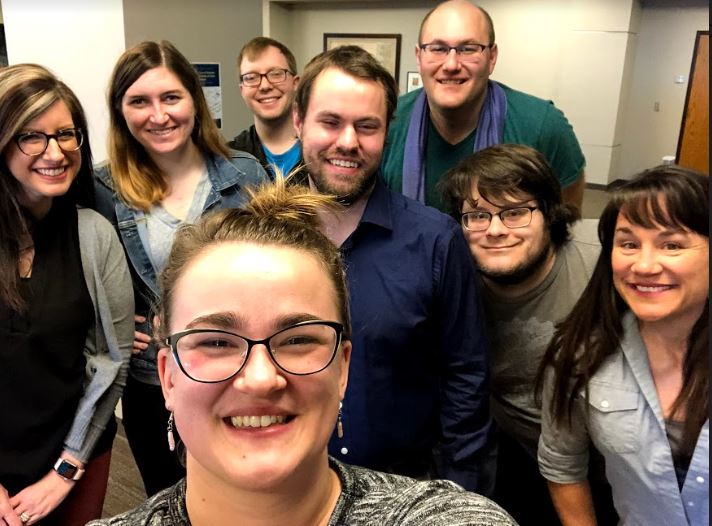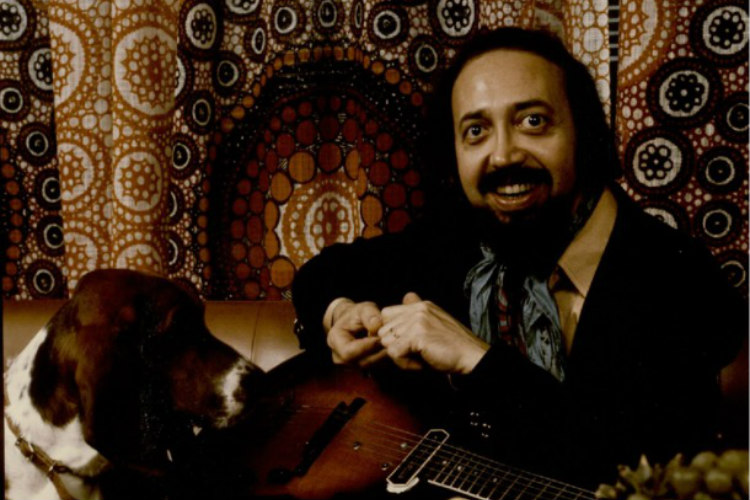Barney Kessel began playing guitar when he was 12 years old in his hometown of Muskogee, Oklahoma. By 1937, at the age of 14, he was playing professionally. Kessel built a legendary jazz career and an impressive collection of music and manuscripts.
After Barney’s death, his widow Phyllis Kessel wanted to preserve his legacy and began researching places to house Kessel’s extensive collection which includes 77 boxes and 325 recordings on six different audio-visual formats. When she determined that the Marr Sound Archives and the LaBudde Special Collections at UMKC would be the best stewards, she set into motion a complex and detailed project for a team of curators, archivists, catalogers, preservationists, and students to make the collection available to researchers.
Kessel played with jazz greats, such as Charlie Parker, Lester Young and Charlie Cristian. In 1942, he moved to California and played with big bands and studio musicians and contributed to sound tracks with musicians including Sam Cooke, Elvis Presley and the Beach Boys. Fortunately, Phyllis recognized that his collection is important both for both Kessel’s contribution to jazz and to secure his place in the canon of jazz music for researchers and enthusiasts.
“When Phyllis was looking for a place to house Barney’s collection, she contacted Rob Ray at San Diego State,” says Chuck Haddix, curator of Marr Sound Archives. “He is the former head of the UMKC collections and recommended she get in touch with us because of our strong holdings in jazz. He knew that we would be able to manage it.”
The Marr Sound Archives is recognized nationally for its focus and expertise in preserving sound recordings in every format. But Kessel’s collection goes beyond the music. A significant portion of this gift is on paper, including Kessel’s journals and correspondence, which became part of LaBudde Special Collections.
“We steward these materials long-term,” says Sandy Rodriguez, associate dean of special collections and archives. “The National Archives cannot possibly collect all significant materials so local archives play a critical role in preserving local history. While we’ve worked with several local donors, we also receive significant donations beyond our local area because of the strength of our collections and the relationships that we’ve built.”
Processing collections the size of Kessel’s can take considerable employee hours and resources. Even with the extent of the collection, the team of staff and students were able to process and catalog much of the collection in a year and a half. Often, the process can take much longer.

“We ensure that materials are made accessible in a way that makes sense,” Rodriguez says. We arrange, rehouse, and describe collections in a finding aid. It’s critical to making the materials available for research and study. It’s a collective effort.”
Since so much of the work of processing and cataloging happens behind the scenes, Rodriguez thinks sometimes people don’t understand the extent of the process.
“If we’re doing our job well, you won’t notice,” she says. “We set priorities in order to determine which collections to make available next, using a number of factors, but processing a collection takes far more time than accessioning a collection, which contributes to our backlog.”
Still, Rodriguez notes, backlogs are not unusual in her field.
“Processing work is often under-resourced. I don’t know of any archives that can make their collections available in a way that keeps pace with the intake of collections.”
While the team has already processed a remarkable amount of materials, some work remains. They still need to digitize the unique at-risk audio-visual material. Despite the challenges, Rodriguez’s team is dedicated to making materials available for research and scholarship.
“We not only preserve and facilitate access to these collections, we also directly support the use of the collections for student learning and research.”
Barney Kessel: Illuminating a Musical Legacy digital exhibit is available on line. For more information on supporting the UMKC Libraries, Marr Sound Archives or LaBudde Special Collections, contact Jennifer Ingraham, UMKC Foundation assistant vice president.

